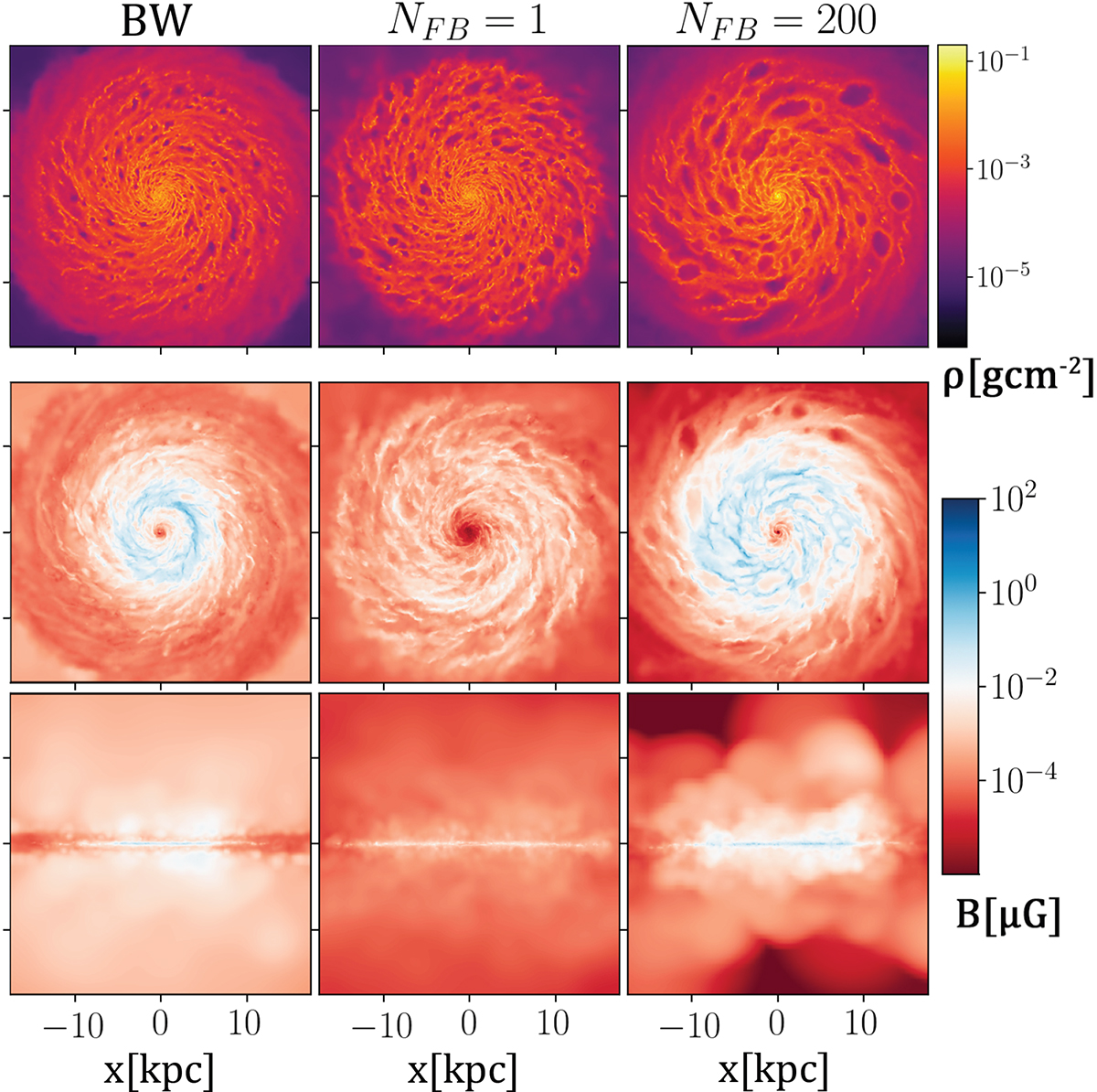Fig. 16.

Download original image
Rendering of density, magnetic field strength of the Low resolution simulations with varying feedback scheme at t = 2 Gyr. Strong field growth can be seen for both the blastwave model and the high coupling superbubble model (NFB = 200). Both the blastwave model and the physical superbubble model (NFB = 1) leads to small feedback bubbles which pushes material far away from the disk. The mass loading in the superbubble model (NFB = 1) is however much larger as the blastwave model mainly generate hot low-density outflows, this means that there is less transfer of magnetic fields from the central region in the blastwave model. Increasing the injection length (NFB = 200) leads to more mass loading, larger feedback bubbles and a more concentrated vertical structure, which in turn lead to more amplification of the magnetic field within the central disk.
Current usage metrics show cumulative count of Article Views (full-text article views including HTML views, PDF and ePub downloads, according to the available data) and Abstracts Views on Vision4Press platform.
Data correspond to usage on the plateform after 2015. The current usage metrics is available 48-96 hours after online publication and is updated daily on week days.
Initial download of the metrics may take a while.


